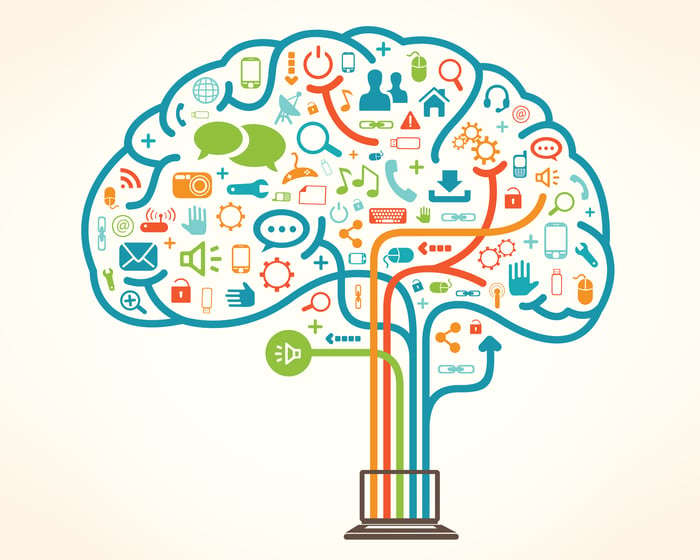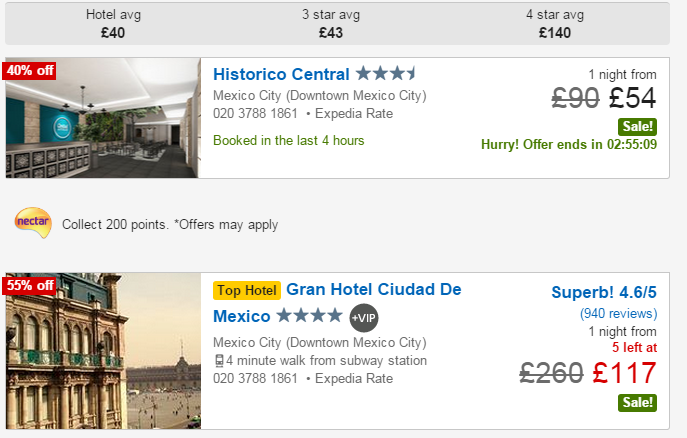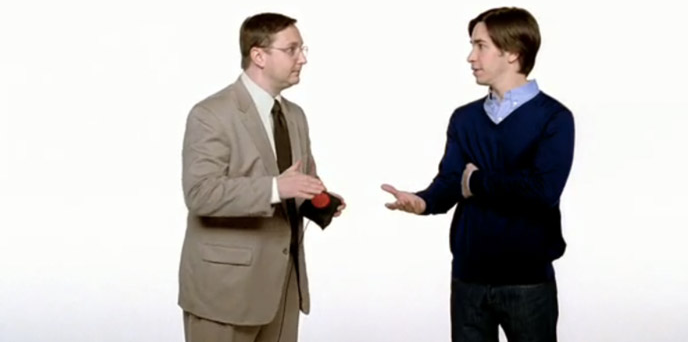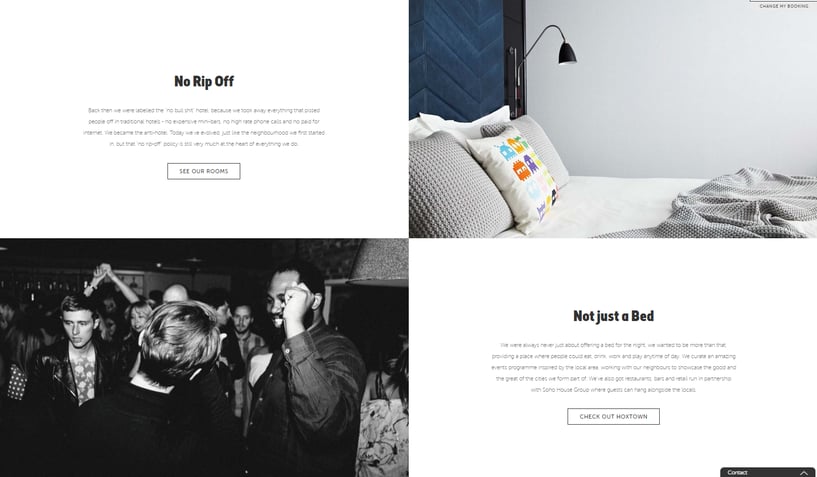Technology, consumer trends, and marketing practices are constantly evolving.
There’s a plethora of strategies and tactics you can choose to market your hotel. Unfortunately, this flood of new tools can make any hotelier feel overloaded with information.
Here’s the good news: no matter how rapidly tactics, technology, and strategies change, what makes us “tick” as humans will always remain the same.
In order for you to understand, influence and persuade your potential guests, you need to know how to apply the triggers that make your guests “tick”.
Today, we’re giving you 4 powerful psychological triggers that are timeless. Used correctly, these will boost your conversions, increase engagement, and convert potential customers into happy guests.
Let’s go.
1. Win Guests by Telling Them What They’ll Lose
If I asked you to choose between ground beef that’s 75% lean or 25% fat, which one would you choose?
A study on consumer choices revealed that most people will pick ‘75% lean’, despite it being materially the same as ‘25% fat’.
Similarly, in 1995, a behavioral study showed two groups of women videos about breast cancer and mammography. The video aimed to persuade them to get themselves screened: the first was positively framed, highlighting the benefits of having a mammogram. The second video was negatively framed, and stressed the risks of not having one.
The results?
The loss-framed video increased mammogram bookings by 10%.
The trigger responsible here is known as loss aversion. It suggests that people fear losing out on something more than they desire to gain something.
This search ad from the Dollar Shave Club puts the trigger to good use:
Instead of telling you how much you can save, the Dollar Shave Club tells you that you’re overpaying on blades
The real question is: How can you use loss aversion to drive more bookings?
Easy! Just tell your guests what they’re missing out on.
A simple way to do this is to put text near your call to action that tells guests about the great deals and exclusive offers they’ll miss out on if they don’t sign up for your newsletter or book now.
This might sound like a small thing, but for one online retailer, it boosted subscriber count by 473%.
This trigger can also be used to power up your packages and offers. For example, if you include special activities or other add-ons with your packages, let your guests know how much money they’re wasting by not taking your offer.
To make the most out of this trigger, best practices suggest that you apply it to tangible benefits that your guests are afraid of losing. Like money, time, or activities or rewards.
2. Ignite Your Guests’ Desire with Urgency and Scarcity
Ever wondered why almost every sales letter urges you to “act soon” while “stocks last”?
It’s because marketers know they can springboard desire for their products or services to dizzying heights with scarcity and urgency.
So what exactly are scarcity and urgency, and how can they help you?
Urgency is when a buyer feels the need to act quickly because of how important something seems to be.
Scarcity is when a buyer feels the need to snatch up a product/service because supplies are short, but demand is high.
Online Travel Agency Expedia does an exemplary job of using scarcity and urgency:
(When using Expedia’s hotel search for hotels in Downtown Mexico)
Expedia knows what makes their customers tick. Not only do they use a ton of social proof, they cleverly deploy urgency and scarcity to lift demand and sway people to action.
The first search result above uses urgency. It has a room availability countdown and tells searchers to “Hurry!” This prompts people to act quickly to secure the fleeting deal.
The second search result uses scarcity.
Searchers will find that only 5 rooms are left. This inspires people to act quickly and boosts demand, because nobody wants to let a good deal slip through their hands.
You can implement these triggers by showing when room availability is limited, or when special package or discounts are going to end.
3. Increase Loyalty by Makings Your Guests Feel Important
It doesn’t matter if you’re part of a remote tribe in the Amazon rainforest, CEO of a Fortune 500 company, or a book club member.
We all crave the feeling of being valued.
A proven way to make your guests feel valued is to reward them for their custom.
When a marketing news company called Drum interviewed Matt Walls (Hotel.com’s marketing chief), they found that using a reward-based strategy and making customers feel important was essential to gaining their 10 million loyalty program members.
“It allows us to stand out from our competitors and provides an incentive for our customers to return to Hotels.com time and again. We want to show our customers that they are valued, so we reward them for their loyalty. It is no secret that maintaining a good relationship with your existing customers is key to long-term success.” –Matt Walls
One hotel chain even used a reward based strategy to boost enrollments by 78%.
Want more info boosting bookings with rewards? Check out our post on targeted special offers.
4. Pick a Fight to Get Guests on Your Side
A controversial study by psychologist Henri Tajfel studied the behaviour of people when engaged in acts of mass hatred. His findings were interesting, and a little disturbing:
The study found that people would show loyalty to their group and completely discriminate against outsiders, even with the smallest of distinctions.
In the tests, subjects were asked to decide between two people or objects that they had no previous connection to. When it came to dishing out rewards to their person or object of choice, subjects showed a notable bias towards their “in-group” and avoided sharing rewards with “outsiders”.
Shocking, isn’t it? But what’s more surprising is how this “us vs. them” common enemy trigger is used by big name brands.
Apple used this with their MAC vs. PC beef to solidify their uniqueness. Miller Lite used it when they mocked non-manly beers. And Careerbuilders.com used it to unite people against jobs they hate.
You can also use this common enemy trigger to make your guests side with you. How? By uniting against something they have a strong dislike for.
To effectively use this trigger, start by digging into what pains or problems irritate your guests. Then show how you’re against those problems too:
- Do you provide customer service that exceeds expectations?
- Have beautifully designed rooms?
- Or do you have exciting surroundings and activities?
Then tell guests how you’re against:
- Zombie-like customer service
- Snore-inducing design
- Lacklustre holidays
Here’s a live example of this trigger in action from the Hoxton Hotel:
They describe themselves as the “anti-hotel”. They tell guests how they’re against “high rate phone calls”, “expensive minibars”, and “paid-for internet.”
Becoming the “anti-hotel” and making traditional, ‘overpriced’ hotels the enemy creates a deeper connection with guests and helps win them over.
Conclusion
Things in the digital world are in a constant state of flux, and the world of hotel marketing is no exception to the rules of the game.
However, by understanding and using the psychological triggers that are imbedded into our brains, you’ll know what works with your guests, why it works, and most importantly, how to use it to land more bookings.
Need help with implementing these triggers on your hotel website? Get in touch with us.








